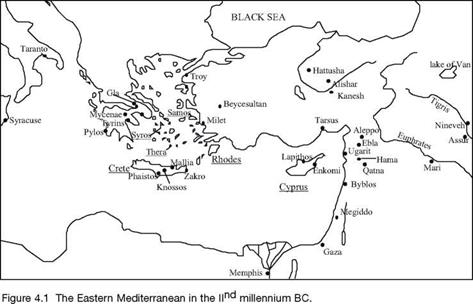The maritime civilizations of the Aegean Sea: urban and agricultural hydraulics
The first great European civilizations are found in and on the shores of the Aegean Sea – and thus in direct maritime contact with Egypt and Syrian ports. The earliest such civilizations are the Cyclades thalassocracy in the IIIrd millennium BC, the first maritime power of the Mediterranean; then Minoan Crete beginning at the end of the IIIrd millennium BC.[137] Civilization flourishes all around the Aegean Sea during the IInd millennium BC – especially in Crete, but also on the island of Cyprus, and in Asia Minor, with Troy to the north, and to the south Rhodes, Samos, and Kos. The first Hellenes came to continental Greece in several waves, and it is very likely around 1900 BC that Greek-speaking people appear – the Acheans. The warrior civilization that we call the Mycenaen developed from this time. Maritime trade is particularly active during this entire period – among all the European civilized lands, of course, but also with Syria, including the port of Ugarit to the north on the trade routes to Mari and to Hattusha, the capital of the Hittite Empire; and the port of Byblos to the south, threshold to Egypt.
|
|
New arrivals from the north appear between 1200 and 1100 BC: the Dorians. This begins the disappearance of the Mycenaen civilization, whose survivors desert the cities.
Some flee to the islands and coast of Asia Minor (Ionia). This is possibly the origin of the “Sea People” that we met in Chapter 2, responsible for the burning and sometimes the disappearance of the main cites of Levant. The destruction of Troy is likely one of the episodes of this drama. In the Ionian islands, the memory of the bellicose Acheans is preserved in the Homeric poems the Iliad and the Odyssey.







Leave a reply